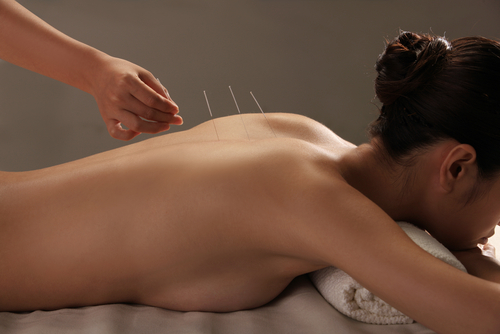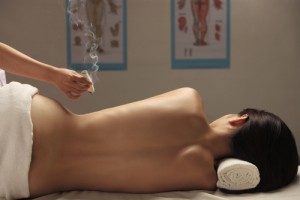Complementary and Alternative Medicine is Gaining Credibility Among MS Patients
Written by |

 Complementary and alternative medicine (CAM) are no substitutes for the regular treatment of multiple sclerosis (MS), however, they are becoming more common among patients as a way of alleviating the symptoms of the disease. Massage therapy is an example of that. 36-year-old Jessica Rich is a patient who embraced the new trend.
Complementary and alternative medicine (CAM) are no substitutes for the regular treatment of multiple sclerosis (MS), however, they are becoming more common among patients as a way of alleviating the symptoms of the disease. Massage therapy is an example of that. 36-year-old Jessica Rich is a patient who embraced the new trend.
Massage therapy can lower pain levels up to 50 percent over a three-month period in patients who undergo in ten weeks of treatment, according to a study published at the Multiple Sclerosis Journal, and recently covered on Digital Journal. Stress is one of the triggers of the disease, and massages can improve the health and life-quality of patients, as a complement to the medication prescribed by physicians.
“Massage therapy is a well-being approach for addressing body, mind and spirit. Along with stress reduction, massage therapy can help to increase flexibility and reduce muscle stiffness caused by spasticity,” explained Winston Moore, Regional Director of Therapist Development for Massage Envy Spas in Washington, D.C., Maryland and Northern Virginia, one of the centers that offers treatment for MS patients.
[adrotate group=”4″]
“Massage therapy is also very effective at increasing deep sleep, as touch itself has been known to create positive feelings such as comfort and care. And with more deep sleep, you have less pain,” says Tiffany Field, Ph.D., of the University of Miami’s Touch Research Institute.
 However, Jessica Rich, who was diagnosed this year, is pursuing alternative therapy for her MS in an even more radical way. She didn’t want to be treated with conventional medical treatment and prescription drugs, since she doesn’t believe that traditional Western medicine can treat patients holistically and has concerns regarding potential side effects of standard MS therapies. Rich looked for a traditional Chinese doctor who could treat her with herbs, but also sought out other alternative medicine experts such as a naturopath, medic intuitive, and energy healer.
However, Jessica Rich, who was diagnosed this year, is pursuing alternative therapy for her MS in an even more radical way. She didn’t want to be treated with conventional medical treatment and prescription drugs, since she doesn’t believe that traditional Western medicine can treat patients holistically and has concerns regarding potential side effects of standard MS therapies. Rich looked for a traditional Chinese doctor who could treat her with herbs, but also sought out other alternative medicine experts such as a naturopath, medic intuitive, and energy healer.
“When you choose to do something naturally, you’re making an entire lifestyle change. It’s not just popping a pill and calling it a day. You are changing everything — from the time you go to sleep, to every morsel of food you put in your mouth,” explained Rich in an interview to David Koeppel, from the Fiscal Times.
Although most patients are not as extreme and typically choose to use CAM as supplements and not substitutes to conventional therapies, it is among the younger patients that alternative medicine is gaining more popularity. About 11 percent of patients under 30 years old used homeopathic medicine in 2013, which represents an increase of four  percent from 2009, according to the Natural Marketing Institute.
percent from 2009, according to the Natural Marketing Institute.
“Many people use CAM because they believe that anything sold online or over-the-counter at a pharmacy or health food store is healthy and harmless. But many products that claim to be safe and beneficial may not be. Unlike conventional medical treatments that are thoroughly tested and carefully regulated by the U.S. Food and Drug Administration (FDA), most CAM therapies have undergone very little — if any — scientific study to evaluate their safety and effectiveness,” states the National Multiple Sclerosis Association about the subject.
“So some forms of CAM may be completely safe for a person with MS while others may actually pose significant risks — by producing significant side effects, over-stimulating the person’s immune system or interacting negatively with other medications a person is taking. Some may provide some benefit for a person with MS while others offer no benefit at all,” they added, recommending caution regarding the choice of CAM in treating the disease effectively.





